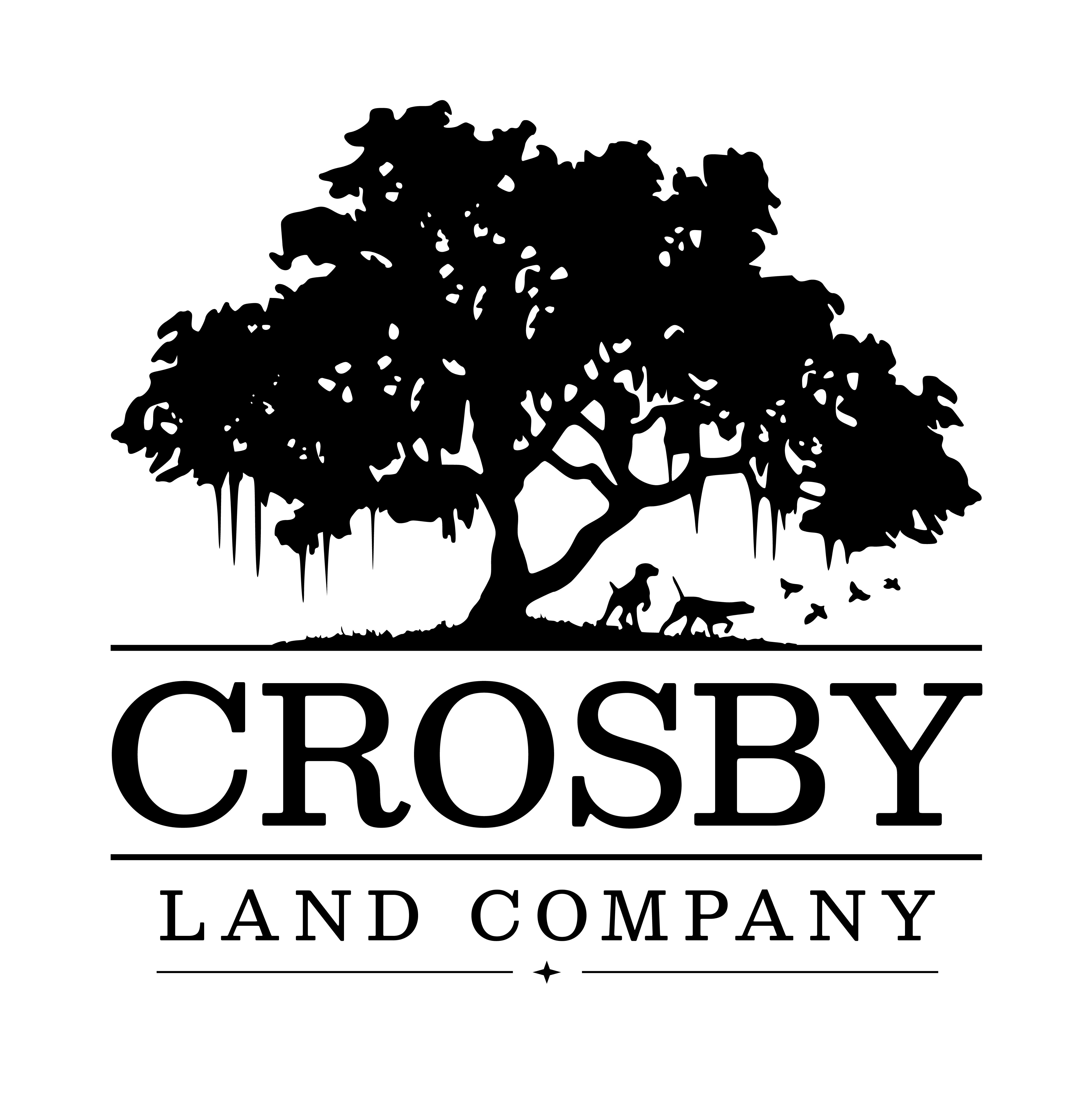Across the Southeast, demand for private hunting land remains strong, and, in many counties, supply is constrained. Buyers are motivated by a mix of lifestyle, access control, and long-term investment potential, with interest spanning resident sportsmen, out-of-state buyers seeking a reliable Southern base, and family offices looking for tangible assets. If you’re selling private hunting land, you need to know the several forces that are shaping today’s market.
1) Stable participation and abundant access keep the hunting culture strong
Both states support a deep hunting culture with significant public access, which helps recruit and retain hunters and sustains demand for private tracts. North Carolina manages over two million acres of public and partner “Game Lands,” underscoring the depth of the state’s hunting community and its year-round interest in habitat and access.
South Carolina’s Wildlife Management Area (WMA) program adds ~1.1 million acres of public hunting opportunity through a mix of USFS, state, and leased lands. This again reflects consistent participation and a healthy pipeline of future private-land buyers who eventually want their own place.
While public access is abundant, serious hunters continue to prioritize control and quality, which are the two biggest reasons cited for stepping up to private ownership. That tension (broad participation + the desire for controlled experiences) is a major driver of private hunting land demand in both states.
2) Wildlife fundamentals remain favorable—especially in South Carolina
Game trends matter to buyers. South Carolina’s deer resource remains robust, with SCDNR’s 2024 deer harvest reporting and surveys indicating continued interest and opportunity—positive signals that support the perceived value of habitat-rich tracts.
North Carolina likewise offers extensive opportunity across its mountain, piedmont, and coastal regions; the state’s wildlife agency highlights broad, high-quality options and more than two million acres of accessible Game Lands, reinforcing overall strength in participation and demand.
Georgia the wildlife fundamentals are equally strong and play a significant role in the demand for private hunting land. The state’s most recent reporting shows a total deer harvest of approximately 298,022 deer in the 2023-24 season. Further, Georgia’s Deer Management Assistance Program engages over 200,000 acres of managed land with specific habitat and herd-management plans, demonstrating that both wildlife numbers and proactive stewardship are thriving. These factors combine to make hunting-land parcels in Georgia especially attractive: buyers aren’t just purchasing acreage, but terrain with proven game resources, established management infrastructure, and high-quality opportunities for deer, turkey and upland species alike.
3) Recreational land remains a resilient asset class
After the record-setting frenzy of 2021, the land market has normalized—but not cooled to “weak.” Industry surveys show continued, moderate growth and firm values for land in 2024–2025, with recreational tracts staying competitive thanks to their lifestyle utility and inflation-hedging characteristics. For buyers considering the Carolinas, this data supports the case for acquiring quality hunting properties now, especially those with timber income or water features.
4) What buyers want right now
Turn-key habitat
Properties with established food plots, roads, gates, blinds, and water sources are commanding premium attention. Buyers increasingly ask for documented management plans (burn schedules, timber prescriptions, and wildlife surveys). This mirrors a broader national tilt toward “done-for-you” recreational assets rather than raw projects.
Scale and privacy
Parcels in the 150–600 acre range see steady interest, balancing affordability with meaningful control. Tracts that adjoin or sit near public Game Lands (for landscape-scale habitat) can gain a halo effect among serious deer, turkey, and waterfowl hunters, particularly in NC’s coastal plain and SC’s Lowcountry/Francis Marion areas.
Mixed-use value
Timber components (merchantable and pre-merchantable stands) and modest farmland acreage are attractive for cash-flow and diversification. With timber markets adjusting over the past 18 months, well-located tracts with professional management are still viewed as durable, long-horizon holds.
Access and logistics
Buyers continue to prioritize properties within 90–120 minutes of major metros (Greenville/Spartanburg, Columbia, Charleston, Charlotte, Raleigh). Good interior access (all-weather roads, creek crossings) and year-round usability reduce friction and increase visit frequency—boosting perceived value.
5) Regional highlights
South Carolina: The Lowcountry (Beaufort, Jasper, Colleton, Hampton) draws multi-species interest, including deer, turkey, waterfowl, plus fishing access via tidal systems. The Midlands offer strong deer/turkey hunting with productive timberland. The WMA infrastructure and healthy big-game outlook bolster confidence that habitat work on private tracts will pay off.
North Carolina: Demand spreads across the Sandhills and Coastal Plain (deer, turkey, waterfowl) and the Foothills/Mountains for mixed recreation. The sheer breadth of Game Lands keeps the sporting culture vibrant, feeding long-term interest in private ownership among hunters who want exclusive control and longer seasons on their own acreage.
Georgia: Georgia’s famed Quail Belt, stretching through counties like Thomas, Brooks, and Dougherty, remains the epicenter of upland bird hunting in the Southeast, while central and northern regions offer exceptional deer and turkey opportunities. Properties featuring a mix of longleaf pine, hardwood drains, and managed agricultural fields are particularly sought-after for both recreation and income potential. Whether it’s a traditional quail plantation, a multi-use timber tract, or a family hunting retreat, Georgia’s diversity and established wildlife management culture make it one of the most desirable destinations for hunting land ownership in the region.
6) Outlook: Lean supply, motivated, quality-seeking buyers
Expect continued firmness for well-improved hunting tracts with credible habitat value, modest income (timber or ag), and realistic proximity to population centers. Macroeconomic uncertainty and rate volatility are not scaring off core recreational buyers; if anything, many view hunting land as a utility asset—a place for family, game management, and diversified wealth preservation. Recent land-market surveys back that thesis with evidence of ongoing buyer activity and resilient pricing in 2024–2025.
In both South Carolina and North Carolina, demand for hunting land is supported by strong wildlife resources, robust public-land cultures that feed private ownership aspirations, and the enduring appeal of land as a tangible, multi-generational asset. If you’re evaluating a purchase, prioritize habitat quality, access, and mixed-use potential, and be decisive when the right tract surfaces.
7) Preparing your hunting land for sale: Steps to maximize appeal and value
Ready to sell your hunting land? First impressions and smart preparation aren’t just nice-to-haves—they’re game-changers that separate successful sales from properties that sit on the market. Today’s buyers aren’t just looking for hunting land for sale; they’re hunting for properties that deliver both incredible outdoor experiences and rock-solid investment returns. Here’s how we help you make your property the one they can’t stop thinking about:
Showcase hunting opportunities and unique features:What makes your land a hunter’s paradise? Start there. Whether you’ve got established food plots that draw wildlife like magnets, water features that serve as natural gathering spots, or a track record of trophy harvests, these are your property’s superstars. Those hunting stands, blinds, and well-maintained trails? They’re not just improvements—they’re proof of your land’s potential. Make sure they’re in showroom condition because buyers notice everything, and these features can add serious value to your bottom line.
Enhance land management and accessibility:Well-managed land speaks volumes before you say a word. Take the time to mow those trails, patch up access roads, and clean up entry points—because presentation matters. Got creeks, ponds, or timber stands? Make them accessible and showcase-ready. When your food plots and habitat improvements look sharp, you’re not just showing property; you’re demonstrating ongoing potential for quality hunting and income streams that smart buyers recognize as investment gold.
Organize documentation and records:Documentation is your secret weapon. Gather everything that tells your property’s success story—recent surveys, detailed maps, wildlife management plans, harvest records, and income statements from hunting leases. Why does this matter? Because when you hand over this information upfront, you’re building buyer confidence and helping them see the full investment picture. It’s the difference between “nice property” and “I need to own this.”
Maximize curb appeal and ease of showing:First impressions? They’re everything. Make those entryways inviting and boundaries crystal clear. Consider adding signage or a property map at the entrance—help buyers immediately understand what they’re looking at and how much land they’re getting. Easy access for showings, whether by vehicle or on foot, can make or break a buyer’s connection to your property. When they can easily envision themselves using the land, you’re halfway to a sale.
Work with a land specialist: Here’s where partnering with the right real estate agent changes everything. A specialist who knows hunting land for sale inside and out will connect you with serious buyers, not tire-kickers. They know exactly how to market your land’s unique features, reach the right audience, and guide you through a smooth transaction that maximizes your property’s value. Why go it alone when you can work with someone who not only specializes in this work, but also spends all their free time outdoors? If you’re considering selling your private hunting land, our team of land experts at Crosby Land Company can help!
By taking these steps, you’re not just preparing to sell—you’re positioning your hunting land as the investment opportunity the next owner has been searching for. That’s how you ensure the best possible return when it’s time to close the deal.
Sources: ncwildlife.gov

